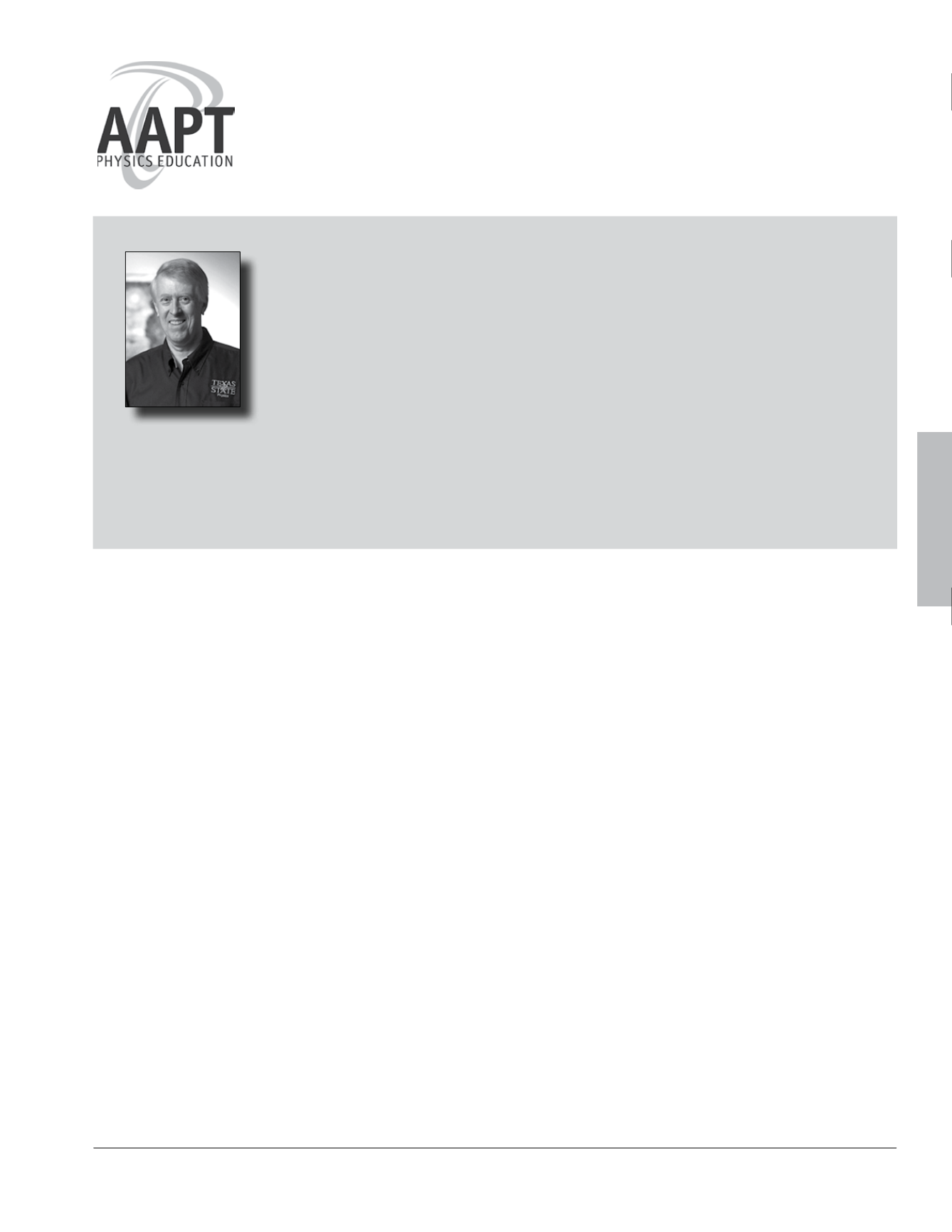
101
July 26–30, 2014
Tuesday morning
The Easy JavaScript Simulations Platform:
A Reader for Android and iOS Tablets,
A Simple Authoring Tool to Create
Simulations, and the ComPADRE OSP Library
Location: STSS 420A
Date: Tuesday, July 29
Time: 12–1 p.m.
The Easy Java/JavaScript Simulation (EjsS) program enables students and
teachers to create simulations by providing a set of simplified tools to
lower the barrier to programming. To date over 500 Java simulations for
astronomy and physics have been created with EjsS and are available on
the ComPADRE Open Source Physics (OSP) Collection. Recently, the
functionality of EjsS has expanded to include the creation of JavaScript
simulations that run on computers and tablets. This workshop introduces
the EjsS tool (freely available on ComPADRE) to participants and leads
participants through creating simple JavaScript simulations. Participants
will receive the free EjsS Reader for tablets to quickly and easily download
and run JavaScript simulations from ComPADRE. Participants are encour-
aged to bring laptops to install and run the EJS authoring tool and tablets
to install the Reader. <
> and <
um.es/Ejs/>.
and create a vessel that can become negatively buoyant, retrieve an object
at the bottom, then become positively buoyant to bring the object back to
the surface.
*Sponsored by Melissa Vigil
DK02:
9:30-9:40 a.m. There’s More to the Story: Activities to
Accompany Middle School Literature
Contributed – William E. Reitz, 2921 Kent Rd., Silver Lake, OH 44224;
Try several make n takes that flow from popular MS fiction, nonfiction and
graphic novels. Materials and references provided.
DK03:
9:40-9:50 a.m. Sound and Music on the Cheap
Contributed – Wendy K. Adams, Department of Physics and Astronomy,
Greeley, CO 80631;
Several hands-on sound and music activities for ages 4-100 will be present-
ed. Materials and instructions will be provided to assemble your own straw
trombone and cup banjo. Other acoustic demonstrations will be presented
including tuning fork transfer of energy to Ping-Pong balls and water and
resonance with pasta and raisins.
DK04:
9:50-10 a.m. Sparking Student Interest: E&M Activities
for Middle School and Beyond
Contributed – Anne J. Cox, Eckerd College, St. Petersburg, FL 33711;
Students build a stylus for an i-device/smartphone, simple motor and
other devices in activities inspired by a DIY (“Do-It-Yourself”) or “Maker”
philosophy. The idea is for students to learn as they build their own experi-
ments or demonstrations. These activities have been used successfully with
middle school as well as introductory college students.
Ceremonial Session: AAPT Klopsteg Memorial Lecture Award
Presented to Donald W. Olson
Location: Northrop Auditorium
Date: Tuesday, July 29
Time: 10:30–11:30 a.m.
Presider: Gay Stewart
Don Olson
Celestial Sleuth: Using Physics and Astronomy to Solve Mysteries in
Art, History, and Literature
Donald W. Olson, Texas State University, San Marcos
How do astronomical methods make it possible to identify celestial objects and to calculate dates
and times for night-sky paintings by Vincent van Gogh and J. M. W. Turner? When did Claude
Monet witness a dramatic sunset on the Normandy coast? Why is there a blood-red sky in Edvard
Munch’s “The Scream”? On what dates did Ansel Adams create his moonrise photographs in
Yosemite? What spectacular celestial event inspired Walt Whitman to write a poem and Frederic
Church to create a painting? Why is a bright star described in Act 1, Scene 1, of
Hamlet
? On what
date did the Roman fleet commanded by Julius Caesar invade Britain? To answer questions like
these, faculty and students from Texas State University have made research trips to the relevant
sites and have published a series of articles over the last two decades, applying physics and as-
tronomy to art, history, and literature.


